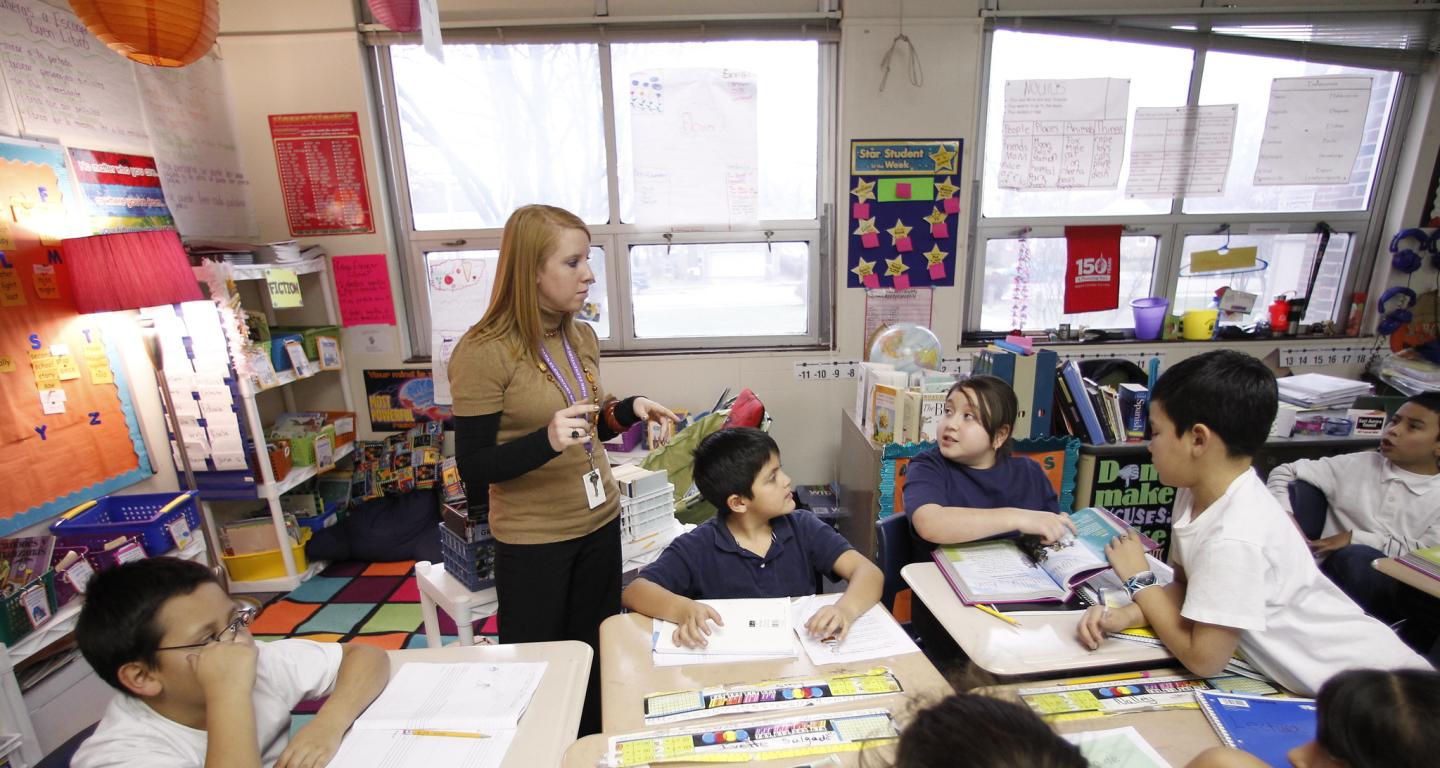Expert Primary Science Tuition Singapore for Understanding Complex Concepts
Expert Primary Science Tuition Singapore for Understanding Complex Concepts
Blog Article
A Comprehensive Guide to the Numerous Understanding Techniques in Main Science Instruction
The expedition of varied knowing methods in key scientific research direction presents a possibility for instructors to improve student involvement and comprehension substantially. By taking a look at hands-on knowing strategies, inquiry-based strategies, and collective strategies, we can recognize efficient practices that satisfy numerous discovering designs. Furthermore, the integration of modern technology and separated instruction plays an essential duty in fostering a comprehensive environment. The concern remains: exactly how can these approaches be efficiently applied in the classroom to optimize their influence? The response depends on a closer examination of each approach and its ramifications for training science.

Hands-On Knowing Methods
Hands-on understanding techniques play a critical function in key scientific research instruction, engaging trainees in active expedition and trial and error. These approaches allow learners to engage straight with products and sensations, promoting a much deeper understanding of scientific ideas. By making use of manipulatives, versions, and real-life experiments, instructors develop a setting where pupils can observe, assume, and check their concepts.
Such methods not only enhance comprehension but also grow critical reasoning and analytic abilities. When trainees join activities like building simple machines, growing seeds, or performing chain reactions, they are motivated to ask questions and seek solutions with their own observations. This experiential strategy aids to demystify complex clinical concepts, making them a lot more relatable and easily accessible.
Additionally, hands-on learning advertises partnership among peers, as pupils usually work in groups to perform experiments or share searchings for. This teamwork not just enhances their knowing experience yet likewise develops essential social abilities. Eventually, integrating hands-on strategies in primary scientific research direction fosters a long-lasting love of discovering and curiosity regarding the environment, laying a solid foundation for future scholastic pursuits in scientific research and beyond.
Inquiry-Based Learning
Inquiry-based discovering is an instructional strategy that motivates students to ask inquiries, examine phenomena, and create their very own understanding of scientific principles. This approach moves the focus from traditional teacher-led instruction to an extra student-centered experience, where students take the initiative in their instructional journey. By cultivating curiosity, inquiry-based understanding promotes much deeper engagement with the product, enabling students to explore topics in a significant context.
In technique, this strategy typically includes hands-on experiments, monitorings, and critical thinking activities that line up carefully with the clinical method. Students are motivated to create hypotheses, design examinations, and analyze data, which cultivates crucial skills such as analytical and logical reasoning. The function of the instructor in this framework is to help with expedition, guiding trainees with the inquiry process while motivating independent idea and partnership.
Additionally, inquiry-based understanding supports a feeling of possession over the discovering procedure, inspiring trainees to go after understanding actively. This method not just boosts understanding of clinical ideas however likewise fosters a long-lasting love for understanding, outfitting pupils with the abilities required to browse a significantly complicated world.
Collaborative Knowing Approaches
Collective understanding methods empower trainees to take part in meaningful communications with peers, cultivating a shared duty for their academic outcomes. In key science direction, these strategies motivate students to work with each other to explore scientific ideas, address problems, and carry out experiments (primary science tuition Singapore). By taking part in team activities, trainees can utilize varied perspectives, permitting richer understanding and retention of clinical expertise
One key element of joint knowing is the emphasis on communication abilities. Pupils must verbalize their ideas, pay attention actively to others, and discuss concepts, every one of which are essential competencies in both real-world and scholastic contexts. This social communication not just boosts their understanding of clinical concepts but also promotes team effort and dispute resolution abilities.
When trainees see the value of their payments within a team, they are much more likely to take see page possession of their understanding trip. Generally, incorporating collaborative learning strategies in main science instruction grows a dynamic learning environment that prepares pupils for future academic and social difficulties.
Innovation Integration in Science
The integration of modern technology in primary scientific research guideline enhances discovering experiences by supplying cutting-edge tools and sources that sustain various training approaches, including collaborative knowing - primary science tuition Singapore. The usage of digital platforms, simulations, and interactive applications permits students to engage deeply with scientific ideas, facilitating a more hands-on technique to discovering
Digital laboratories, for example, enable learners to conduct experiments safely and effectively, promoting inquiry-based knowing. These tools can mimic real-world scientific situations, enabling trainees to imagine complicated procedures that would be challenging to duplicate in a typical class setup. Innovation cultivates interaction and cooperation amongst pupils, as they can share searchings for and function with each other on projects through on the internet systems.
Additionally, multimedia discussions and instructional video clips can improve lessons by dealing with varied learning styles, making abstract ideas a lot more accessible. Data analysis tools additionally encourage pupils to accumulate and translate clinical data, enhancing essential assuming skills. Overall, the strategic unification of innovation in primary scientific research direction not just improves interaction but also prepares pupils for a technically innovative culture, equipping them with essential skills for future scientific ventures.
Distinguished Instruction Methods
Differentiated direction approaches are vital for resolving the visit here diverse demands of learners in key science education. These approaches enable teachers to customize their training methods to fit differing capacities, interests, and discovering designs within the classroom. By utilizing separated guideline, teachers can produce a comprehensive environment that fosters interaction and boosts understanding of clinical concepts.
One effective technique is to utilize adaptable organizing, which allows students to collaborate with peers at similar skill levels or with differing viewpoints. This technique motivates peer learning and advertises essential reasoning. In addition, providing choices in projects can equip students, allowing them to select tasks that reverberate with their rate of interests while still satisfying curricular objectives.
Furthermore, incorporating tiered jobs is an additional useful method. By developing tasks with differing degrees of complexity, instructors can make certain that all trainees are properly challenged, no matter their efficiency. Utilizing developmental evaluations to evaluate understanding more allows teachers to change their educational techniques dynamically, guaranteeing that each student gets the assistance they need.
Ultimately, carrying out distinguished guideline methods in primary scientific research education not only boosts trainee learning results but likewise grows an enthusiasm for scientific research, preparing trainees for future scholastic pursuits.

Verdict
In summary, effective main science guideline necessitates a complex technique that encompasses hands-on understanding, inquiry-based techniques, and joint methods. The assimilation of innovation and differentiated direction further accommodates varied knowing designs, fostering an atmosphere for expedition and crucial reasoning. By applying these techniques, instructors can enhance trainee involvement and comprehension, eventually supporting a lifelong enthusiasm for scientific research and inquiry. Such detailed techniques are necessary for developing notified and interested future researchers.
The exploration of diverse knowing techniques in main scientific research direction provides an opportunity for educators to enhance student involvement and understanding significantly.Hands-on learning techniques play a pivotal role in primary science guideline, involving pupils in energetic exploration and testing.Inquiry-based discovering is a training method that motivates students to ask questions, investigate phenomena, and construct their own understanding of clinical ideas.Collaborative understanding strategies equip students to involve in purposeful interactions with peers, fostering a common obligation for their academic end results. Generally, incorporating collaborative understanding techniques in primary scientific research direction cultivates a vibrant this post understanding atmosphere that prepares pupils for future academic and social challenges.
Report this page